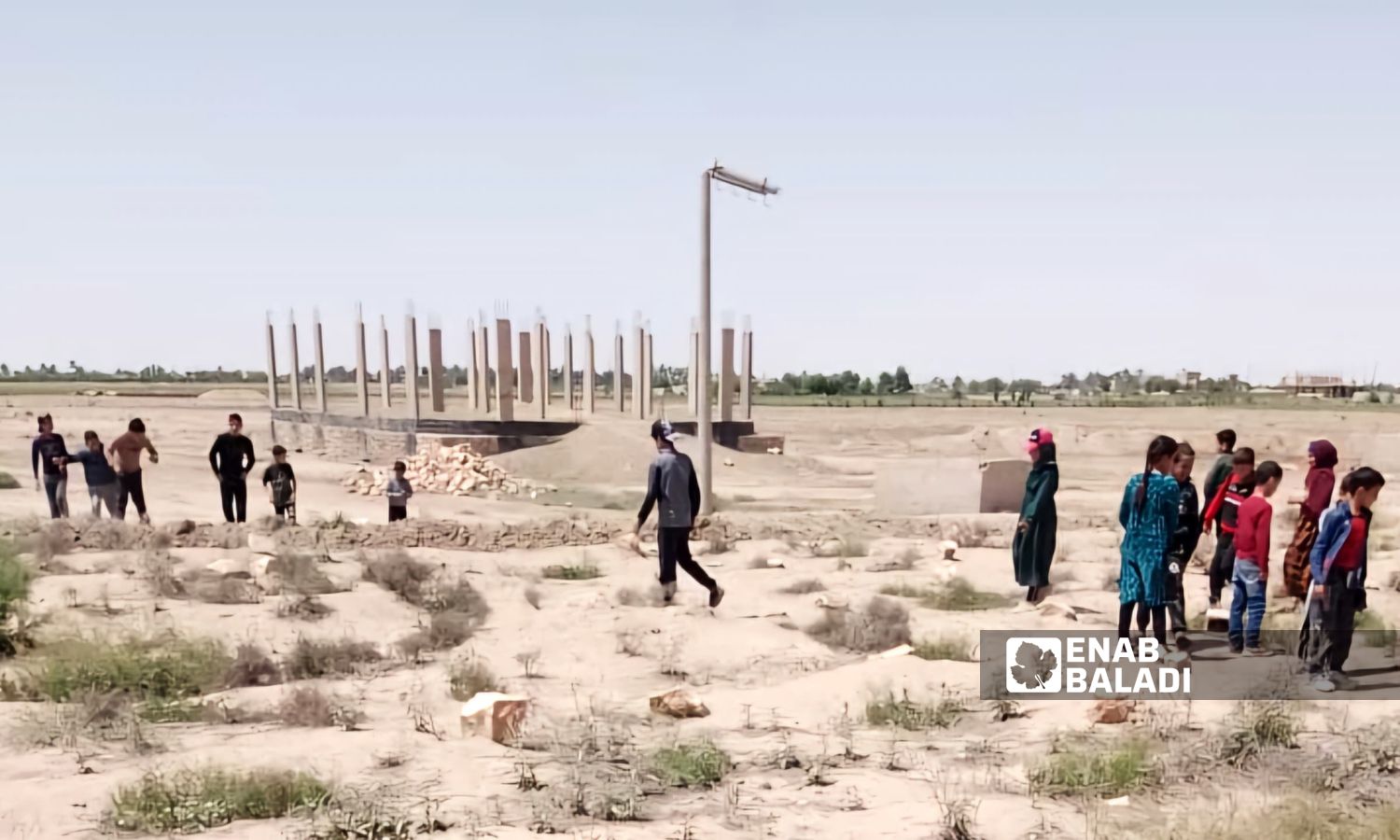



Deir Ezzor – Obadah al-Sheikh
The mass and random graves in the town of al-Baghouz are causing concern among the region’s residents, triggering fears of disease spread or epidemics.
The town, located in eastern Deir Ezzor province near the Syrian-Iraqi border, was the last stronghold of the Islamic State organization in Syria.
Many residents have expressed fears of an epidemic spreading due to these graves, as many now live adjacent to graves of people killed during International Coalition bombings on the area, who were buried randomly since the Islamic State organization could not bury them in official ways.
Mohammad al-Khatalan, a civilian from al-Baghouz and a former employee at the Autonomous Administration’s services authority, told Enab Baladi that the reality of individual and mass random graves is unknown to many, noting that they pose a danger to the residents.
He added that it is well-known about the period that witnessed battles between the Islamic State organization and the Syrian Democratic Forces (SDF) that the organization could not bury the dead in public cemeteries and resorted to burying them in mass graves in agricultural lands and houses.
According to al-Khatalan, 13 mass graves are spread across al-Baghouz, most of them among residential neighborhoods, except for graves that were relocated by the Euphrates Program previously supported by the US Department of State.
Al-Khatalan, who witnessed the relocation of some graves, said that the Euphrates Program relocated bodies that were buried in the area under the supervision of specialists and forensic doctors, but the relocation processes stopped and were incomplete.
He added that the presence of graves has several impacts, the most important of which are the emission of foul odors and the spread of predatory animals such as hyenas and stray dogs, in addition to the spread of infectious diseases due to the odors like leishmaniasis.
He continued that the mass graves pose a risk to children and families, as they contain bodies buried close to the ground surface, facilitating dogs and animals to easily dig them out.
Al-Khatalan described living in the town as a “major tragedy,” pointing out the necessity to relocate the bodies buried in the area to public cemeteries, which would reduce the risks posed by them in al-Baghouz.
A source working in the Deir Ezzor Civil Council under the Autonomous Administration of North and East Syria (AANES), who preferred to remain anonymous for security reasons, told Enab Baladi that the return of the area’s residents from displacement following the defeat of the Islamic State organization enabled them to detect 18 mass graves, five of which were later moved by organizations.
While there are still more than ten mass graves clearly visible, projects aimed at relocating these graves have stopped, despite about five years passing since the end of military operations.
The source added that there is no life in al-Baghouz even though people reside there, especially with the lack of services like electricity and water, which residents have to secure at their own expense.
Meanwhile, Zhaib al-Mukhalef, one of the dignitaries of al-Baghouz, told Enab Baladi that the area urgently needs intervention by the governing authority (AANES) and international organizations, noting that the spread of predatory animals and insects now threatens the security of the area and the safety of its residents.
He added that the spread of these mass graves poses a danger to the residents, as animals can easily dig up the bodies because they are buried in shallow pits, along with the odors spread in the area, noting that al-Baghouz “has become like a ghost town at night,” a reference to residents’ inability to move around due to the hyenas and dogs.
Skin and intestinal diseases such as leishmaniasis, chicken pox, and respiratory diseases are prevalent in the area, according to Ibrahim al-Tarfa, a nurse at the al-Baghouz clinic.
He added that skin, respiratory, and intestinal diseases are spreading in the town, pointing out that the clinic he works at has received over 2000 cases of patients with the aforementioned diseases in the past four years.
The decline in living conditions for al-Baghouz residents is not limited to the presence of bodies underneath the soil; Enab Baladi previously reported the spread of mines and war remnants, posing a concern for residents’ mobility in their living areas.
The villages and towns of the eastern countryside of Deir Ezzor, where the Autonomous Administration predominates, experience marginalization in terms of services and security amidst a complete disregard by the regional authorities.
if you think the article contain wrong information or you have additional details Send Correction